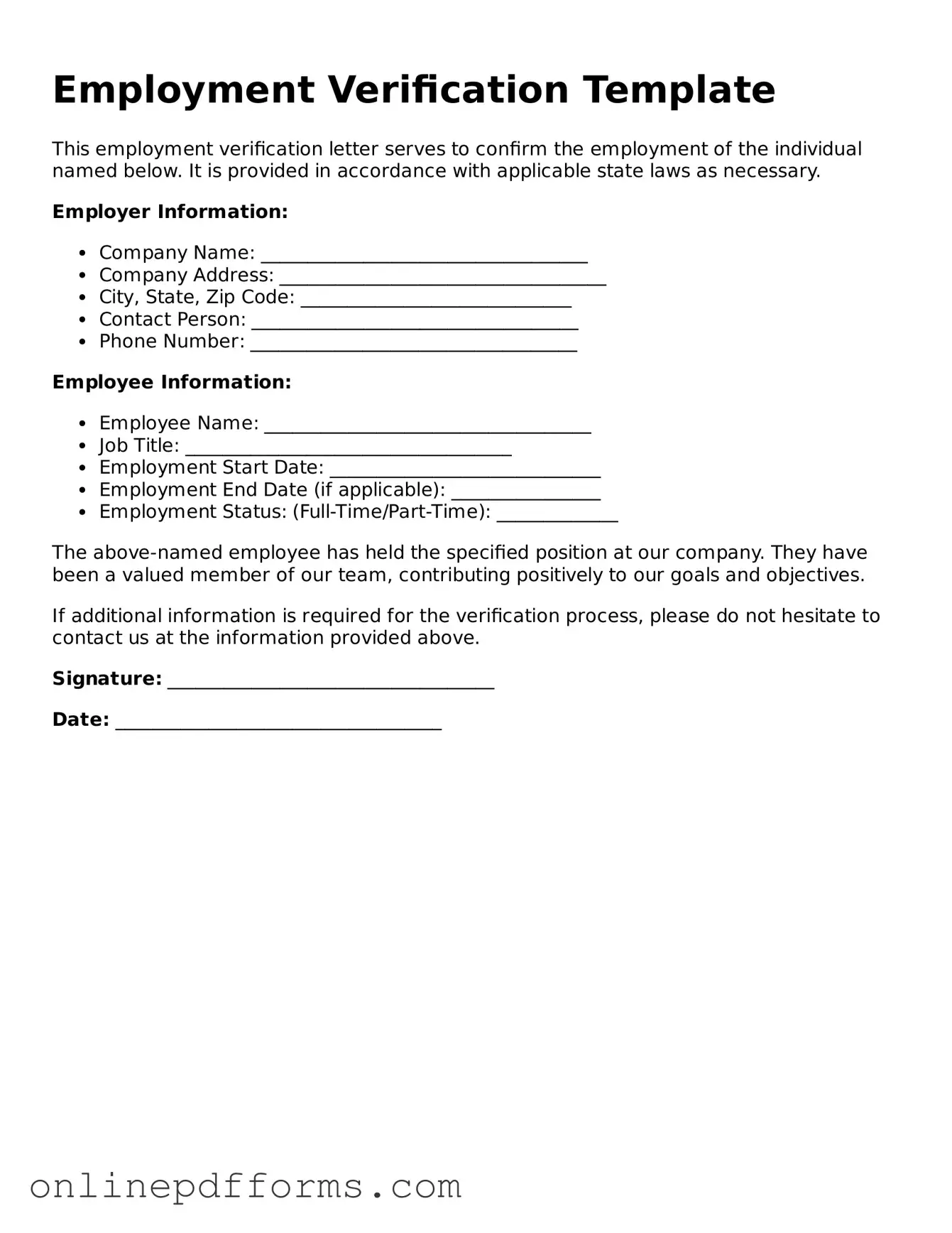The Employment Verification form is similar to the I-9 form, which is used by employers to verify the identity and employment authorization of individuals hired for employment in the United States. Like the Employment Verification form, the I-9 requires employees to provide specific documentation that proves their identity and eligibility to work. Both forms are essential for compliance with federal regulations, ensuring that employers do not inadvertently hire individuals who are not authorized to work in the country.
Another document that shares similarities is the W-2 form. The W-2 is used to report an employee's annual wages and the taxes withheld from their paycheck. While the Employment Verification form focuses on confirming employment status, the W-2 provides a detailed account of an employee's earnings and tax contributions. Both documents are crucial for the employee's financial records and for tax reporting purposes.
The Social Security Administration (SSA) also utilizes the SSA-89 form, which is a request for the disclosure of information. This form allows employers to verify an employee's Social Security number. Similar to the Employment Verification form, it serves to confirm the identity of the individual and ensures that the information provided is accurate. Both forms help maintain the integrity of employment records.
The Paystub serves as another relevant document. Paystubs provide a breakdown of an employee's earnings, deductions, and net pay for a specific pay period. While the Employment Verification form is focused on employment status, paystubs offer a financial snapshot of an employee's compensation. Both documents are often used to verify employment and income for loans or rental applications.
The Offer Letter is also similar in purpose. This document outlines the terms of employment, including job title, salary, and start date. Like the Employment Verification form, the Offer Letter confirms that an individual has been hired and provides essential details about the employment relationship. Both documents serve as proof of employment, though the Offer Letter is typically issued before the Employment Verification form is completed.
The Background Check Authorization form is another document that parallels the Employment Verification form. This form allows employers to conduct background checks on prospective employees, which may include verifying previous employment. Both forms are used to ensure that the information provided by the applicant is accurate and trustworthy, thereby protecting the employer's interests.
Additionally, the Reference Check form is similar in that it seeks to validate an applicant's qualifications and work history. Employers often use this form to contact previous employers or references to gather insights about a candidate's performance. Like the Employment Verification form, it plays a critical role in the hiring process by confirming the applicant's background and experience.
The Job Application itself shares similarities with the Employment Verification form. The Job Application requires candidates to provide personal information, work history, and references. Both documents are essential in the hiring process, as they help employers assess whether an applicant meets the qualifications for the position. The Employment Verification form is often completed later in the hiring process to confirm the information provided in the application.
Finally, the Tax Form (such as the 1099 for independent contractors) also bears similarities. This form is used to report income paid to individuals who are not classified as employees. While it serves a different purpose than the Employment Verification form, both documents are essential for tax reporting and ensuring compliance with tax laws. They help establish the nature of the working relationship and the obligations of both parties.
